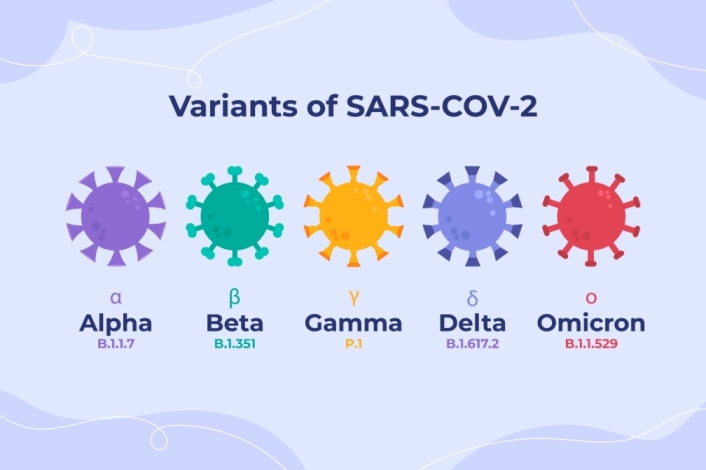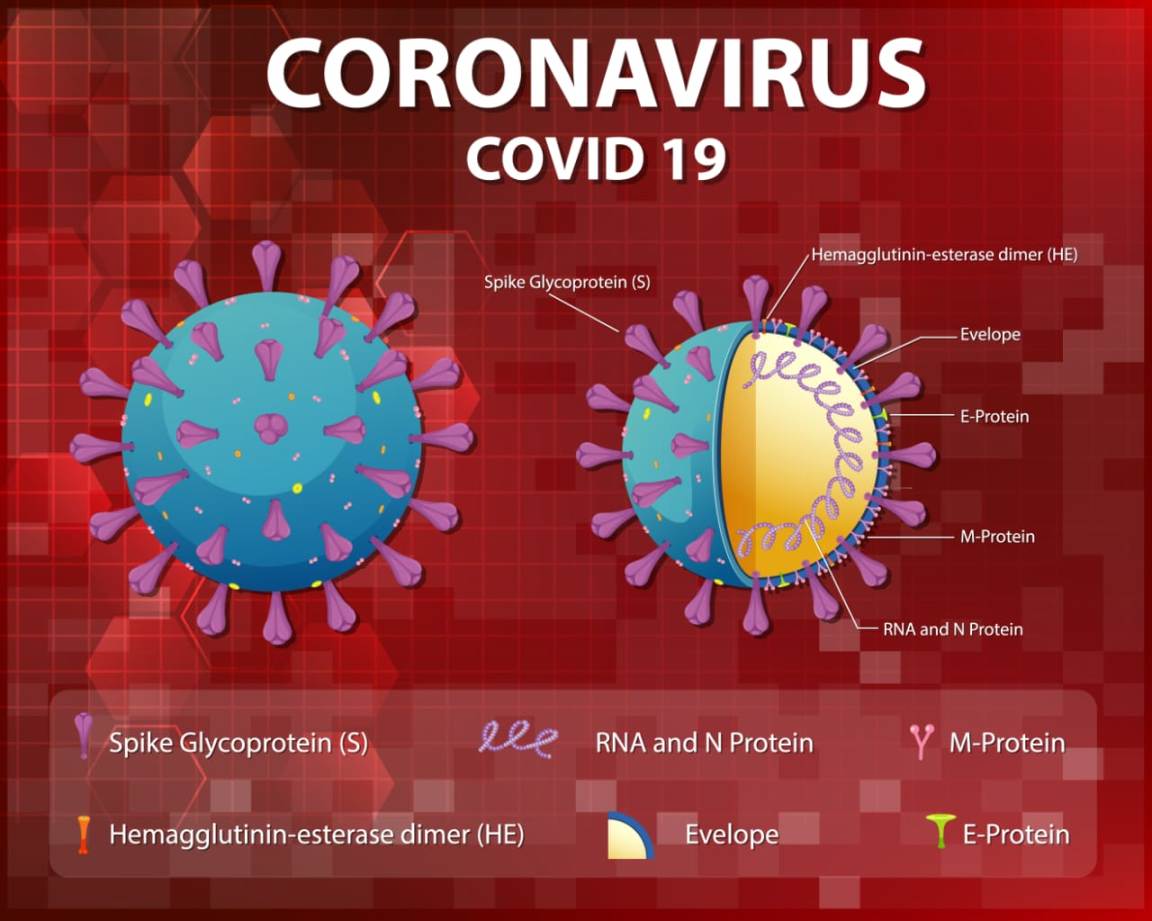COVID-19 has made a comeback. Indeed, after causing chaos globally from 2019 to 2022, the virus is gradually re-emerging in Asia, with Singapore and Hong Kong reporting the highest number of cases in recent weeks.

Closer to home, our country has been experiencing an uptick in the COVID spike NB.1.8.1 and LF.7 variants, along with the recently identified XFG variant found in various regions across the country. While the disease remains endemic and is currently deemed to pose no immediate threat according to government officials, what exactly is this new variant, and how does it differ from previous ones? Let’s explore the symptoms further.
Summary: The Return of COVID-19 in India 2025
In 2025 In 2023 and 2024, India experienced a notable decline in COVID-19 cases, thanks to natural immunity and widespread vaccination efforts that contributed to a return to relative normalcy. However, in early 2025, various states and cities started to report a rise in infection rates again.
What Is Causing the Increase in Cases due to COVID Spike ?
The primary reasons include:
- New Subvariants: Omicron lineage mutations include NB.1.8.1 and LF.7.
- Increased Travel: Travel after the holiday increased transmission.
- Public Fatigue: Decline in mask usage and social distancing.
- Weather Factors: Immune responses may have been affected by seasonal variations.
What Are the New Variants NB.1.8.1 and LF.7?
Origin and Characteristics
- NB.1.8.1: This subvariant was first detected in Southeast Asia in early 2025 and demonstrates higher transmissibility; however, it typically does not result in severe illness.
- LF.7: Discovered in urban areas of Europe and India, LF.7 has a brief incubation period, leading to rapid onset of symptoms.
Genetic changes and evasion of immune responses.
As a result of changes in the spike protein, both strains can evade immune reactions, including antibodies generated by vaccination. Nevertheless, existing vaccines still offer protection against severe illness and the need for hospitalization.
Regional Hotspots and Active Case Count
As of May 2025, the most affected Indian states include:
- Kerala: Over 430 active cases
- Maharashtra: 210+ cases
- Delhi: 104+ active cases
- Tamil Nadu and Karnataka: Emerging clusters in metro areas
Health departments in these states have increased testing and genome sequencing efforts to contain the spread.
Frequent Symptoms of the 2025 COVID Strains
The symptoms associated with NB.1.8.1 and LF.7 show some variations from previous strains. The majority of patients experience:
- A mild to moderate fever
- A sore throat accompanied by a runny nose
- Fatigue and general body aches
- Minor gastrointestinal upset
- An occasional dry cough along with a feeling of heaviness in the chest
High-Risk Populations
Older adults, individuals with diabetes, heart conditions, or weakened immune systems should implement additional precautions, as they have a higher likelihood of experiencing complications.
Government Actions and Health Regulations
Recent Government Measures
- Expanded Testing: In areas with high infection rates, additional RT-PCR and antigen testing is being conducted.
- Vaccination Initiatives: Senior citizens and frontline workers are being urged to receive booster doses.
- Isolation Guidelines: Updated protocols for contact tracing and self-isolation have been released.
- Travel Surveillance: Health checks at airports, railway stations, and bus terminals have been intensified.
Public Guideline
The Health Ministry advises:
- Using triple-layer masks or N95 respirators in public settings.
- Steering clear of large crowds, particularly indoors.
- Practicing hand hygiene and frequently sanitizing.
- Keeping current with COVID-19 booster vaccinations.
Mental Well-Being Amid the COVID Comeback
The ongoing waves of COVID-19 have profoundly affected mental health. Feelings of anxiety, fear, and uncertainty have become widespread, particularly among those who suffered losses during previous waves.
Coping Strategies
- Reduce media exposure to prevent feelings of panic.
- Engage in mindfulness and breathing techniques.
- Maintain communication with loved ones through phone calls or video chats.
- Consult a professional if signs of depression or anxiety intensify.
Function of Pharmacists and Healthcare Providers
Pharmacists and healthcare professionals play a vital role in:
- Informing the public about identifying symptoms
- Advising on over-the-counter medications and supplements
- Distributing accurate information about vaccines
- Overseeing the availability of necessary medications such as antipyretics and oximeters.
FAQs on COVID-19 in 2025
Are vaccines still effective?
Yes. While efficacy against infection may be slightly lower, vaccines remain effective in preventing severe illness and hospitalization.
Should I get tested for mild symptoms?
Yes. Early detection can prevent further transmission. Use home test kits or visit a government-approved center.
Can children get affected by NB.1.8.1 and LF.7?
Yes, but most pediatric cases have been mild with quick recovery.

Best Foods to Boost Immunity During COVID-19 Surge
Fruits High in Vitamin C
- Oranges, Amla (Indian gooseberry), Guava, Kiwi, Papaya
These fruits enhance the production of white blood cells and aid in mitigating the severity of symptoms.
Leafy Greens and Vegetables
- Spinach, Moringa, Broccoli, Curry Leaves
Rich in antioxidants and immune-boosting vitamins such as A, C, and K.
Foods Rich in Protein
- Lentils (Moong Dal), Paneer, Eggs, Nuts & Seeds
Contribute to cellular repair, muscle preservation, and the production of antibodies.
Foods with Probiotics
- Yogurt, Buttermilk, Fermented Rice (Idli/Dosa)
Promote gut health, which is closely tied to a robust immune system.
Whole Grains and Millets
- Brown Rice, Whole Wheat, Oats, Bajra, Ragi
Provide sustained energy and important nutrients like B vitamins and zinc.

Herbal Drinks for immunity-Booster to Daily routine
Tulsi-Ginger Herbal Tea
Ingredients: Fresh tulsi leaves, ginger, lemon, honey
Benefits: Alleviates inflammation, combats infections, relieves sore throat.
Turmeric Milk (Golden Milk)
Ingredients: Turmeric (Haldi), black pepper, warm milk
Benefits: Acts as a natural antioxidant, supports respiratory health.
Traditional Ayurvedic Kadha
Ingredients: Tulsi, cinnamon, black pepper, mulethi, dry ginger
Benefits: Boosts immunity, clears mucus, and promotes lung health.
Giloy Herbal Juice
Available as: Ready-made herbal tonic or freshly prepared decoction
Benefits: Enhances the immune response and minimizes respiratory infections.
Amla Juice or Fresh Shots
Rich in: Natural Vitamin C and polyphenols
Benefits: Aids in detoxifying the body and enhances infection resistance.
Final Advice for Optimal Advantage
Ensure Adequate Hydration and Nutrition
Aim to consume 2.5 to 3 liters of water each day alongside soups and herbal teas.
Steer Clear of Processed and Sugary Foods
These foods can compromise immune function and elevate inflammation.
Opt for Fresh and Seasonal Foods
Fresh, in-season fruits and vegetables offer greater nutritional benefits and are simpler to digest.
Concluding Remarks: Being Knowledgeable and Vigilant
The battle against COVID-19 in India is still ongoing. The new variants emerging in 2025 pose a public health threat due to their swift spread, even if they tend to be milder. We can prevent a larger outbreak by staying informed, following guidelines, and protecting vulnerable populations.
Get vaccinated, continue wearing masks, and participate in community health efforts. By collaborating, we can navigate this new wave with caution and resilience.

